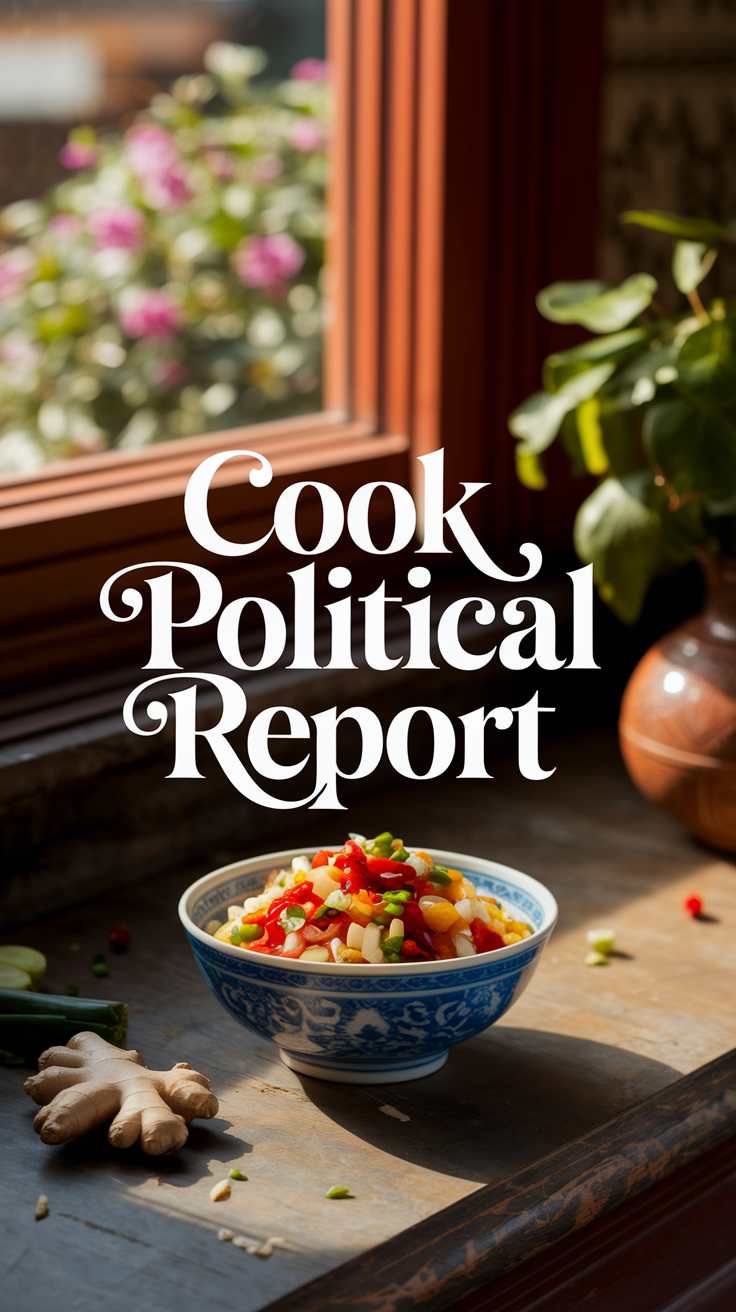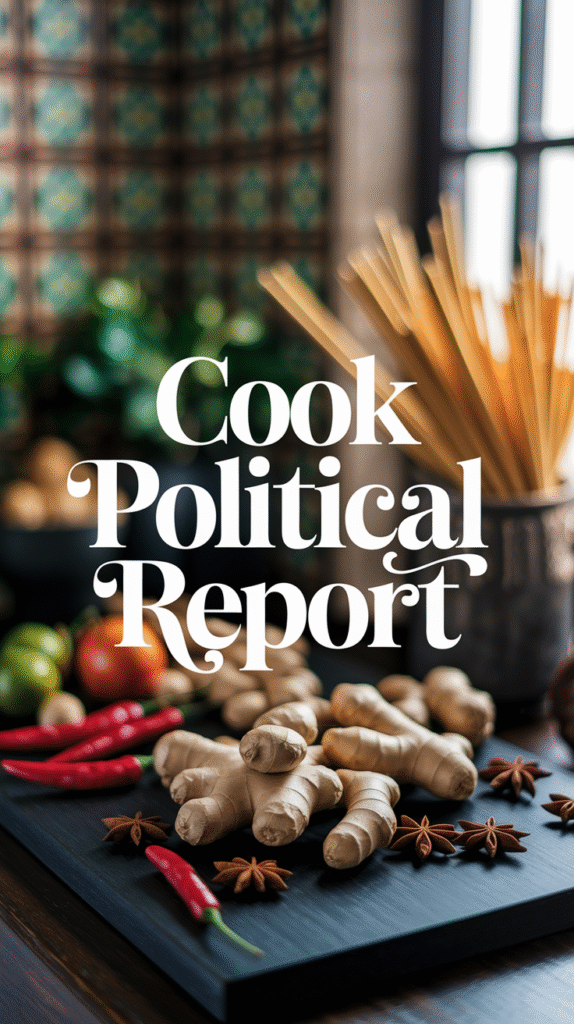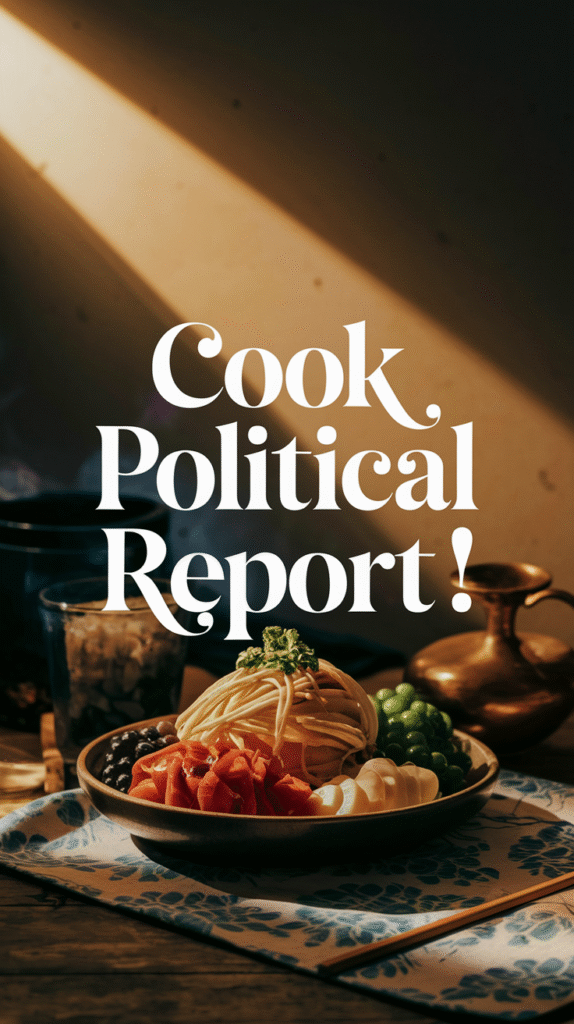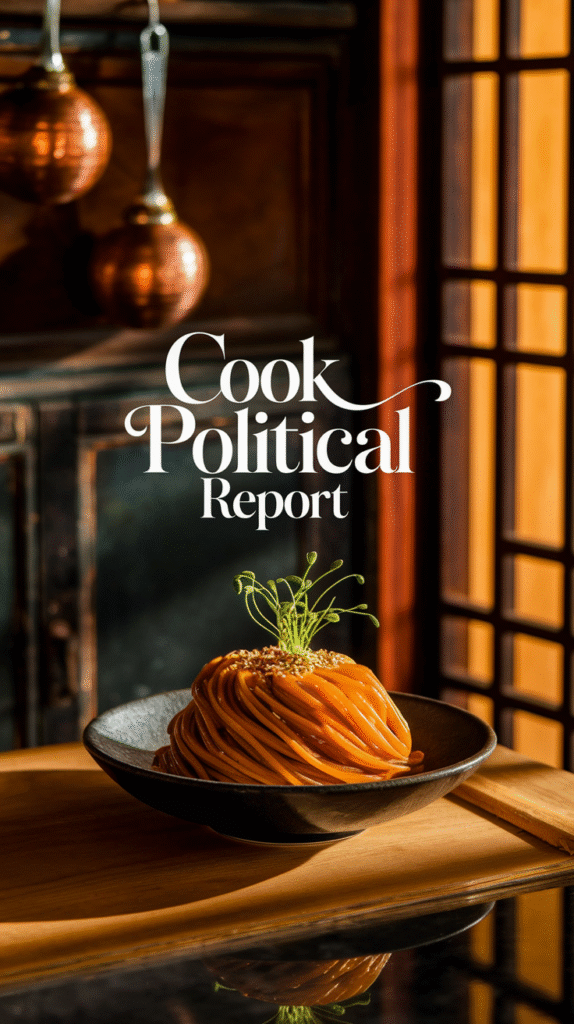Staying informed about shifts in political landscapes is crucial for understanding electoral strategies. The Cook Political Report stands out as a leading source for in-depth analysis of electoral trends across the United States. By analyzing the latest updates from this respected firm, one can grasp how political parties navigate the challenges and opportunities that arise during election cycles.
One of the most recent trends highlighted by the Cook Political Report is the increasing polarization in American politics. With major elections approaching, candidates are increasingly aligning themselves with their party’s core values, making it vital for voters to understand where these candidates really stand. Here are some key trends observed:
- Shift in Voter Demographics: There’s been noticeable growth among younger voters who prioritize issues like climate change and social justice. This demographic shift is significant as it can influence electoral outcomes in ways previously unseen.
- Incumbent Advantage: The report has emphasized that incumbents are still favored to win but face more competition from fresh faces. As voters seek change, this could lead to surprising outcomes in longstanding districts.
- Importance of Local Issues: National narratives often dominate campaigns, but local issues like education, healthcare, and job growth have gained traction in voter concerns, with candidates adapting their messaging accordingly.
To effectively track these trends, you can explore resources provided by the Cook Political Report. For detailed analysis and projections, visit their website at Cook Political Report. Regularly checking their insights can help you stay ahead in understanding how local and national dynamics play out.
Moreover, the impact of technology on political campaigns cannot be underestimated. Social media platforms serve as vital tools for candidates to reach their audiences directly. According to recent data shared by the Cook Political Report, candidates who effectively leverage these platforms can significantly enhance their visibility and voter engagement.
| Platform | Usage Rate by Candidates | Effectiveness Rating |
|---|---|---|
| 75% | High | |
| 60% | Medium | |
| 45% | Medium |
Engagement through social media not only helps in building a connection with voters but also allows for real-time feedback on campaign messaging. As trends shift, awareness of voter concerns is more important than ever, and responsive strategies can make all the difference in election outcomes.
Another emerging trend in the political landscape is the role of independent voters. The Cook Political Report has continuously noted that independent voters are becoming a significant force in elections, often swinging results in critical battleground states. Candidates will need to carefully craft their messages to appeal to this growing voter base. Understanding issues that resonate with independents, such as economic policies and bipartisan initiatives, can leverage candidate support and sway undecided voters.
Furthermore, the Cook Political Report identifies shifting political alliances. As certain regions of the country evolve politically, it’s no longer possible to strictly categorize the electorate as predominantly red or blue. For instance, suburban areas traditionally considered Republican strongholds are increasingly trending Democratic due to changing demographics and priorities. Candidates must recognize these shifts and adjust their strategies accordingly.
It is crucial to stay updated with election news as it unfolds. The Cook Political Report routinely updates its assessments, reflecting the most current data and trends in voter sentiment. By subscribing to their newsletter and following their analyses, you can gain deeper insights into how various factors affect electoral contests. For more information, consider logging on to their website for access to unique content and expert opinions which can help you stay informed on these pivotal trends.
As election season approaches, harnessing insights from the Cook Political Report can empower voters and candidates alike to navigate the complex political atmosphere effectively. By understanding these trends, you equip yourself with knowledge that can influence meaningful participation in the democratic process.
The Impact of the Cook Political Report on Election Strategies
The Cook Political Report plays a crucial role in shaping election strategies across the United States. Founded by political analyst Charlie Cook, this non-partisan newsletter provides in-depth analysis and insights on political contests. Its rankings and projections significantly influence how campaigns are structured, how resources are allocated, and how candidates reach out to voters.
Understanding the insights from the Cook Political Report can enhance your grasp of the political landscape as it unfolds during election seasons. The report’s analysis varies from House and Senate races to gubernatorial elections. Candidates and parties frequently adjust their strategies based on the findings of this influential publication.
How the Cook Political Report Influences Campaign Strategies
The Cook Political Report provides a plethora of information that can affect campaign strategies in various meaningful ways. Some of the key influences include:
- Resource Allocation: Campaign managers look at the report to determine where to allocate funds and volunteer efforts. Tight races, as identified by the report, may receive increased attention and funding.
- Targeting Voters: The insights regarding voter demographics and political leanings can inform campaigns on how to tailor their messages to resonate with specific groups.
- Tactical Decisions: The report’s ratings often steer candidates’ tactical decisions – from ad buys to appearances, candidates will look to maximize their impact based on the competitive landscape provided by the report.
Evaluating the Competitive Landscape with Cook Political Report Ratings
The Cook Political Report uses a rating system that categorizes races from “Solid Democratic” to “Solid Republican,” with various toss-up categories in between. Understanding this classification helps campaigns tailor their strategies effectively. Here’s a simplified breakdown of these competitive ratings:
| Rating | Description |
|---|---|
| Solid Democratic | Very unlikely for the opposing party to win. |
| Likely Democratic | Some chance for the opposing party, but strong incumbent support. |
| Lean Democratic | Competitively balanced, but a slight edge for Democrats. |
| Toss-Up | No clear frontrunner; either party has a strong chance to win. |
| Lean Republican | Competitively balanced, but a slight edge for Republicans. |
| Likely Republican | Some chance for the opposing party, but strong incumbent support. |
| Solid Republican | Very unlikely for the opposing party to win. |
By examining these ratings, campaigns can accurately predict how much effort should be placed into particular races. For instance, a race rated as “Toss-Up” will likely receive more resources than one rated as “Solid Republican.” This intelligent allocation can make all the difference, especially in tight races.
The Role of Polling Data
Polling data integrated within the Cook Political Report amplifies its value. Campaigns consider this data as a barometer for public sentiment. It enables them to identify:
- Which issues resonate most with voters.
- How favorably candidates are viewed.
- Voter turnout projections.
Campaigns can use this information to reshape their messaging, targeting the concerns that matter most to their constituents. For more information on how polling data influences election strategies, you can visit RealClearPolitics.
Engagement with Local and State Races
While national elections often get the spotlight, local and state races significantly influence community dynamics. The Cook Political Report brings attention to these races, allowing candidate teams to understand better how local political climates affect their strategies. Engaging candidates can leverage this knowledge to build grassroots support in their communities.
The effectiveness of election strategies hinges greatly on understanding voter behaviors. The Cook Political Report acts as a source of clarity in the often-cloudy world of politics. For tailored insights specific to certain races, you can check the official website for the latest updates at The Cook Political Report.
In an increasingly polarized political landscape, the importance of insightful, analytical resources like The Cook Political Report cannot be overstated. Its impact resonates across all facets of political campaigning, making it a critical component of any successful election strategy.
Understanding the Methodology Behind Cook Political Report Ratings
The Cook Political Report plays a crucial role in shaping the landscape of political analysis and forecasting in the United States. Understanding how the Cook Political Report assigns its ratings can provide valuable insights into electoral dynamics, candidate viability, and overall political trends. Let’s delve into the methodology behind these ratings, giving you a clearer view of what influences their predictions.
Cook Political Report utilizes a combination of quantitative data analysis and qualitative insights. This hybrid approach helps to create a comprehensive picture of the political environment in various electoral contests, including congressional races, gubernatorial campaigns, and more.
The primary factors that feed into the Cook Political Report ratings are:
- Historical Performance: Election outcomes from previous years are evaluated to gauge trends in specific districts or states. For instance, if a particular area has consistently leaned toward one party, that trend will heavily influence future ratings.
- Polling Data: Current public opinion polls offer a snapshot of voter sentiment. This data is analyzed not just in isolation; it’s compared to similar polls from prior elections for contextual understanding.
- Demographics: The makeup of a district or state can change over time due to factors such as migration, shifts in population, and changes in ethnicity or socioeconomic status. Cook researchers evaluate these factors to adjust their ratings accordingly.
- Candidate Dynamics: The strength and appeal of candidates play a pivotal role. A well-known or charismatic candidate may sway public opinion, regardless of party affiliation, leading to adjustments in ratings.
- Political Climate: National and local issues can heavily influence elections. Factors such as economic fluctuations, public health crises, or social movements can shift voter priorities and perspectives.
The Cook Political Report categorizes races into several rating classes, from “Solid Democratic” to “Solid Republican.” These classifications help to simplify complex electoral scenarios, making them accessible to a range of audiences, from casual observers to seasoned political strategists. Here’s a breakdown of the common categories:
| Rating Category | Description |
|---|---|
| Solid Democratic | High likelihood of a Democratic win; little to no competition anticipated. |
| Likely Democratic | Strong Democratic advantage but some potential for competition. |
| Lean Democratic | Democrat is favored but the race is competitive. |
| Toss Up | No clear favorite, both parties have equal chances. |
| Lean Republican | Republican is favored but the race remains competitive. |
| Likely Republican | Strong Republican advantage; challenges expected but unlikely to win. |
| Solid Republican | High likelihood of a Republican win with near-zero competition anticipated. |
These ratings play a significant role in political strategy discussions. Consultants, campaign managers, and party leaders actively utilize insights from the Cook Political Report to fine-tune their strategies, allocate resources, and identify key battlegrounds.
It’s important to note that while Cook’s ratings are based on extensive research and experience, they are not infallible predictions. The political landscape can shift rapidly, influenced by unexpected events or emerging issues. Therefore, staying informed through regular updates from the Cook Political Report is key to understanding how ratings evolve as elections approach.
For more insight and detailed analysis on political races, you can visit the Cook Political Report, which provides ongoing updates and ratings for the various races across the nation.
The methodology behind the Cook Political Report ratings is a blend of data and human insight. By considering historical trends, polling data, demographics, candidate dynamics, and the prevailing political climate, the report seeks to create an informed picture of electoral contests. Understanding this approach can better equip you to evaluate political forecasts and contribute to discussions around upcoming elections.
How the Cook Political Report Influences Voter Perception
The Cook Political Report is a prominent source of electoral analysis and political journalism that significantly shapes how voters perceive various political races. By offering insights into election trends and shifting political dynamics, this report plays a crucial role in informing voters, analysts, and political operatives about the state of elections across the United States.
Understanding how the Cook Political Report influences voter perception begins with its reputation for accuracy and objectivity. Political analysts and voters alike depend on its evaluations to gauge competitive races. When the Cook Political Report assigns ratings to congressional districts or states, it often sways public opinion regarding who might be favored in an election. If a district shifts from “leaning Republican” to “toss-up,” voters in that area may perceive their candidates differently, leading to increased engagement in the electoral process.
Furthermore, the report conducts detailed analyses that consider demographic trends, historical voting patterns, and candidate performance. This extensive breakdown helps voters to see beyond party affiliation and understand the nuances of their localities. For instance, if the report highlights a significant rise in turnout among young voters in a district, it prompts voters to think critically about how their peers might influence the election outcome.
It’s important to note that the Cook Political Report frequently updates its ratings and insights, ensuring that readers receive the most current information. This continuous flow of data can enhance or diminish confidence in a candidate’s prospects, depending on the changes in the political landscape. For example, as election day approaches, shifts in polling data could lead the report to alter its ratings, causing voters to reconsider their choices based on the evolving narrative of the race.
Another way the Cook Political Report affects voter perception is through its exclusive use of data. The report doesn’t just walk through opinions but rather highlights facts backed by figures. This includes statistical models that predict outcomes based on past voting behavior and significant socio-economic factors. Voters are more likely to trust assessments when they’re grounded in data rather than mere speculation.
It’s also worth mentioning how prominent media outlets use the Cook Political Report as a credible source when covering elections. Major networks, such as NBC News and CNN, often reference the report’s findings, further legitimizing its influence on voter perception. When news outlets cite the Cook Political Report, it lends weight to their analyses, and voters are more inclined to consider those viewpoints when making decisions.
To further illustrate the impact of the Cook Political Report, consider the following points:
- Trustworthy Data: Reports that are continually revised based on real-time data lead to a more informed electorate.
- Dynamic Shifting Ratings: Changes in ratings encourage voters to pay closer attention to their local federal races.
- Enhanced Engagement: Voter perception is heightened among those who see their races featured or criticized.
Understanding the Cook Political Report’s influence transcends its immediate data. It also lays the groundwork for broader discussions on political ideology and electoral engagement. For example, if the report projects more competitive races in swing states, it may mobilize campaigns and grassroots organizations to allocate resources accordingly. Increased visibility can lead to a revitalization of voter turnout efforts in those areas.
In terms of visual impact, utilizing charts and tables can also deepen comprehension. Below is a simplified display exemplifying some recent ratings from the Cook Political Report:
| State | Current Rating | Previous Rating |
|---|---|---|
| Pennsylvania | Toss-Up | Leaning Democratic |
| Arizona | Leaning Republican | Solid Republican |
| Georgia | Toss-Up | Toss-Up |
These ratings not only provide a snapshot of the current political climate but also invite voters to actively engage with the electoral process. They encourage dialogue among friends, family, and colleagues, which can amplify civic participation.
To summarize, the Cook Political Report shapes voter perception by establishing a credible voice in electoral analysis. Its current ratings, data-driven insights, and impact on media narratives empower voters to navigate the complexities of politics. Whether you are a political junkie or a casual voter, staying informed through credible sources like the Cook Political Report is essential in making informed choices come election day. For more comprehensive insights, visit the Cook Political Report.
Future Predictions: What to Expect from the Cook Political Report in Upcoming Elections
The Cook Political Report has long been a leading source for political analysis and election forecasts in the United States. As we look towards upcoming elections, many wonder what insights and predictions this esteemed publication will offer. With its robust methodology and expert insights, future predictions from Cook will undoubtedly shape how voters, candidates, and political analysts prepare for competitive races.
One of the most anticipated aspects of the Cook Political Report is its analysis of key races. In the upcoming elections, you can expect the publication to continue its meticulous breakdown of congressional districts, gubernatorial seats, and other significant positions. These analyses will likely highlight not only safe seats but also toss-up districts that are crucial for both major parties.
Furthermore, the Cook Political Report will probably delve into demographic shifts that could influence election outcomes. As the electorate continues to evolve, understanding the factors that drive voter behavior will become increasingly essential. Some of the trends to watch include:
- Shifts in Age Demographics: Younger generations are becoming more active in politics. Expect Cook to provide insights on how their preferences may impact both local and national elections.
- Racial and Ethnic Composition: Changes in racial demographics in specific districts could shift political allegiances, influencing candidates’ strategies.
- Urban vs. Rural Divide: Analysis of different voting trends in urban and rural areas will likely help clarify which party has the upper hand in various regions.
Beyond demographic changes, Cook will likely analyze how national issues will shape voter priorities. Economic concerns such as inflation, job creation, and healthcare will remain at the forefront. Expect predictions on how these crucial factors could sway undecided voters or energize specific voter blocs.
In addition, polling data from the Cook Political Report will play a critical role. The publication is known for its rigorous and frequent polling, which offers a window into voter sentiment. Key elements to look forward to include:
| Type of Data | Description |
|---|---|
| Approval Ratings | Tracking the popularity of incumbents will help gauge potential challenges. |
| Voter Turnout Predictions | Understanding turnout among different demographics can indicate election outcomes. |
| Issue Salience | Campaigns often focus on specific issues—Cook will analyze which are most pressing to voters. |
Another fascinating aspect to watch is how the Cook Political Report addresses the influence of campaign financing. As political donations become increasingly significant in shaping election dynamics, predictions will likely reflect how money in politics can sway both candidates and voters.
It’s also important to pay attention to how Cook evaluates third-party candidates. These individuals can be crucial in tight races, influencing outcomes by drawing votes away from primary candidates. As the political landscape continues to shift, Cook will offer insights into the potential impact of these candidates on major party dynamics.
As we inch closer to the elections, the Cook Political Report will continuously refine its predictions based on new data, voter experiences, and the evolving political landscape. Expect regular updates, which will keep voters and analysts informed and engaged. Readers might find it valuable to subscribe to their newsletter or check their website regularly to stay updated on the latest forecasts and analyses. More information on their insights can be found at The Cook Political Report.
The insights and forecasts generated by the Cook Political Report will be indispensable tools for anyone interested in understanding the upcoming elections. From analyzing tight races and demographic shifts to tracking polling data and campaign financing, you can expect the Cook Political Report to deliver comprehensive and actionable information that will set the stage for what promises to be a competitive electoral season.
Conclusion
The Cook Political Report plays a critical role in shaping the landscape of American elections. By analyzing the latest trends presented in their ratings, political strategists can adjust their approaches and make informed decisions that resonate with voters. This resource not only informs campaign tactics but also influences how candidates are perceived by the public.
Understanding the methodology behind the Cook Political Report’s ratings is essential for grasping the data’s reliability and relevance. Their analytical framework combines polling data, historical trends, and external factors, giving readers confidence in their findings. This meticulous approach ensures that the report remains an industry standard.
As we look toward future elections, the insights provided by the Cook Political Report will continue to serve as a guiding light for candidates and campaign teams alike. Predictions made in the report will likely spark debates, signaling emerging issues that could sway voter sentiment. Staying attuned to these evaluations can empower political entities to engage more effectively with their constituencies and adapt to shifting dynamics.
Ultimately, the Cook Political Report is more than just a collection of ratings; it’s a vital tool that influences election strategies, voter perceptions, and the broader political discourse. By leveraging its findings, candidates can enhance their ability to connect with voters, fostering a more informed and engaged electorate. As elections approach, keeping a close eye on the Cook Political Report will undoubtedly provide valuable insights for anyone invested in the political arena.







Leave a Reply